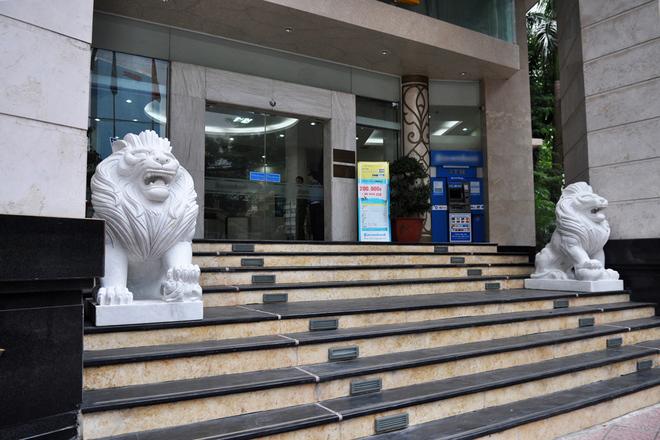
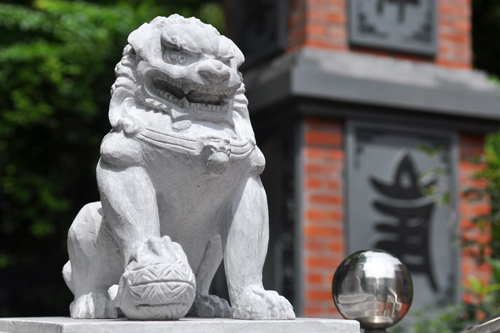
A Chinese-styled stone lion at the ancient pagoda of Chan Tien on Ba Trieu Street, Hanoi.
About 10 years ago, these kind of statues became popular. The most popular is the ty huu (sourced from China, which has a unicorn head, a bear body and wings on its back), and Chinese and European-style lions.
In Hanoi, one can see a pair of stone-made ty huu at the Van Ho Temple on Le Dai Hanh Street, Hai Ba Trung District, and a pair of Chinese stone lions at the 600-year-old Dong Mieu Temple in the village of Cot in Yen Hoa ward, Cau Giay district.
There is also a pair of European-style stone lions in front of the Ba Tam Temple in Duong Xa commune, Gia Lam district as well as many Chinese-style stone lions near the doors of many office buildings on Ba Trieu street in Hanoi.
At the ancient temple of Chan Tien, which is more than 900 years old on Ba Trieu Street, there are European-Asian style stone lions. The pair of lions standing in front of the temple garden are modeled after China while the lion that is being ridden by the Buddha is in a European style.
The chief monk, Thich Duc Dam, says the temple bought the lions about two years ago.
"I did not pay much attention that they were Chinese or Vietnamese lions. I just thought that they were impressive in the garden. Though they look ferocious, lions have good hearts," he says.
In temples and relic sites at other provinces, such as Ha Tien Temple and the Vinh Phuc Provincial Museum in Vinh Phuc province, and on the road to the Linh Ung Pagoda in Da Nang, there are also Chinese and European-style stone lions. Most of them were donated by Buddhist followers.
Ass. Prof. Tran Lam Bien, a member of the National Cultural Heritage Council, says that it is unacceptable to place foreign-style animal statues in front of temples and relic sites.
He says the Vietnamese-style stone lions are mascots symbolizing the strength of Buddhism, which emerged from the Ly Dynasty in the 11th-13th centuries.
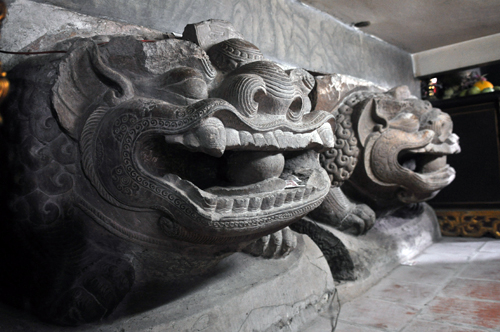
Vietnamese-styled stone lions from the 11th-12th century at the Ba Tam Temple in Duong Xa commune, Gia Lam district, Hanoi.
They look similar to unicorns, with many patterns on the body as if they are carrying the entire moving sky, like a lotus carrying the Buddha to enlighten the world. They look gentle and contemplative.
"Chinese-style stone lions have a ferocious appearance, and they are often placed at tombs. The ty huu is a symbol of commerce in China. This animal does not have an anus. It only eats, and does not discharge its food out of its body, like traders who just want to collect money, not lose anything," Bien said.
According to Bien, due to a lack of knowledge, many Vietnamese people believe in rumors that stone lions and ty huu can guard their houses and help them get rich, so they buy these animal statues to place at their homes or to donate to temples.
Bien strongly opposes the presence of these alien animal statues at relic sites. "Monuments are not only associated with religious beliefs but also with the cultural identity of the nation," he said.
He says the display, use, and donation of alien mascots and strange items to relic sites are not suitable with Vietnam’s customs, and it may distort the country’s history and identity.
The Ministry of Culture, Sports and Tourism has issued a dispatch asking the local Departments of Culture of all provinces and cities to check and remove alien animal statues and strange items from temples and relic sites.
Statues from other cultures at Hanoi temples:
|
Ferocious stone lions "guard" temples and office buildings in Hanoi.
A pair of European-style lions in front of Ba Tam Pagoda in Duong Xa commune, Gia Lam District. The lions were donated by Buddhist followers 10 years ago and they will be removed very soon, according to the temple management board. A Chinese-style stone lion at the back entrance of the ancient pagoda of Chan Tien on Ba Trieu Street. In the garden of Chan Tien temple, there is a small Buddha statue sitting on a European-style lion.
At Dong Mieu Temple which is more than 600 years old in the village of Cot in Yen Hoa ward, Cau Giay district, there are also two Chinese-style stone lions. |







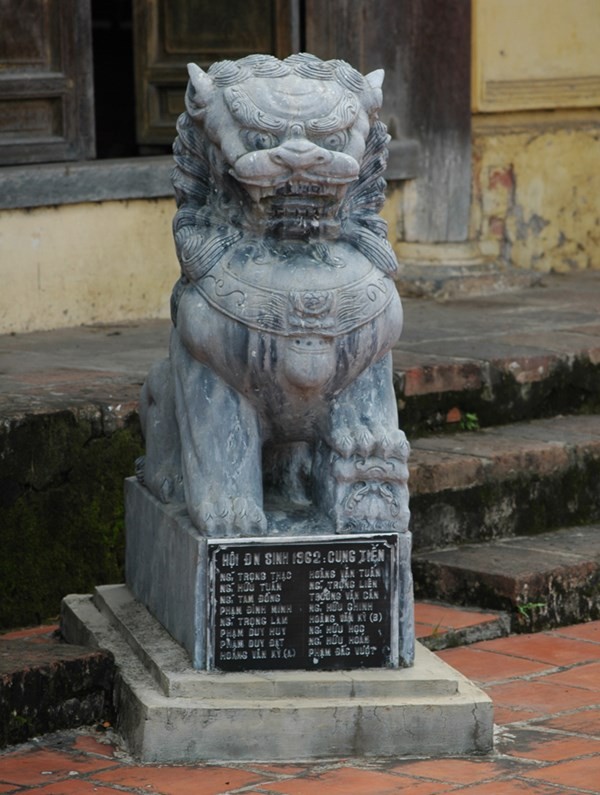
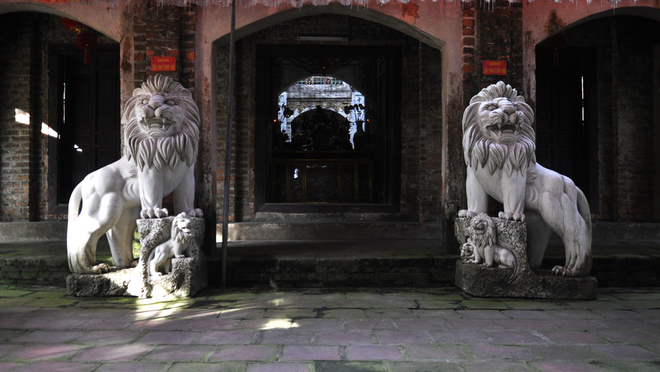
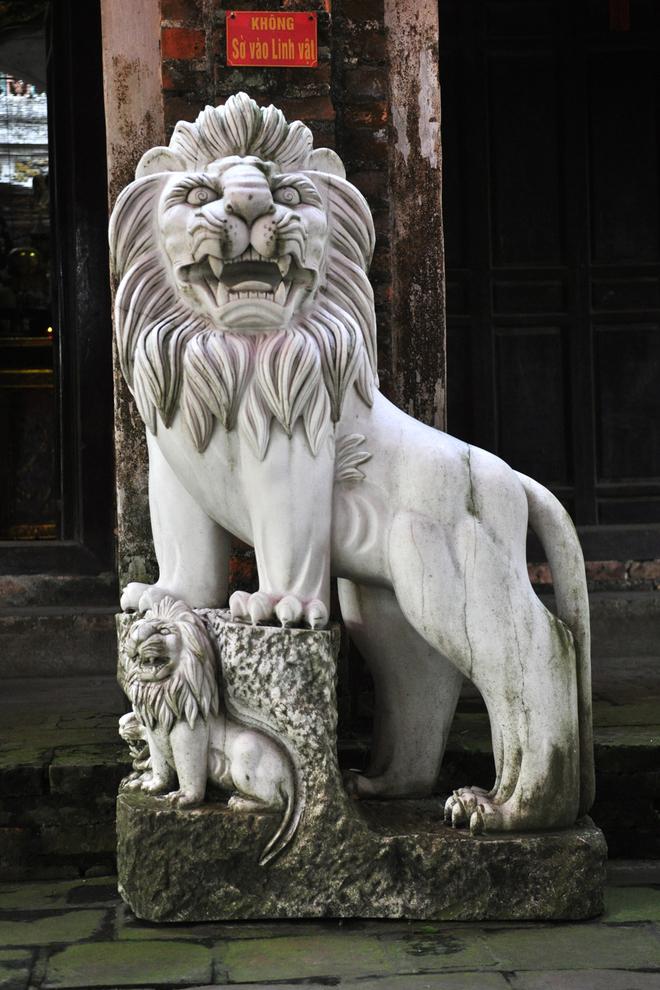
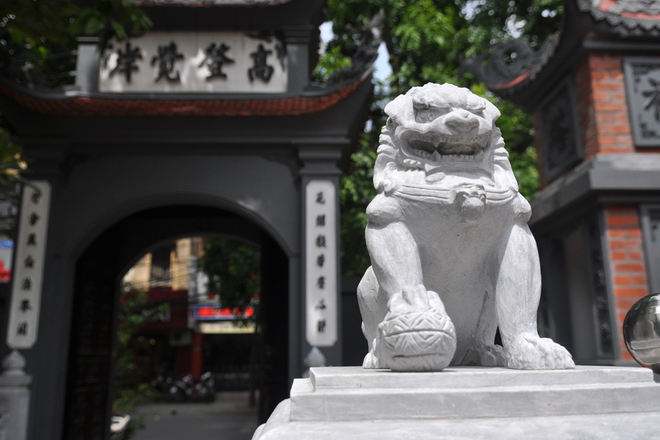
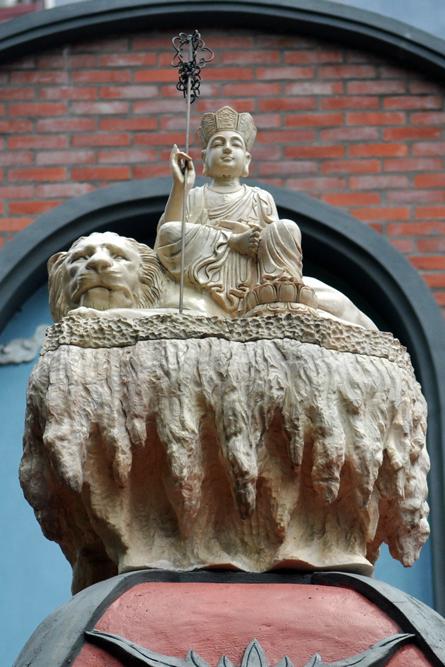
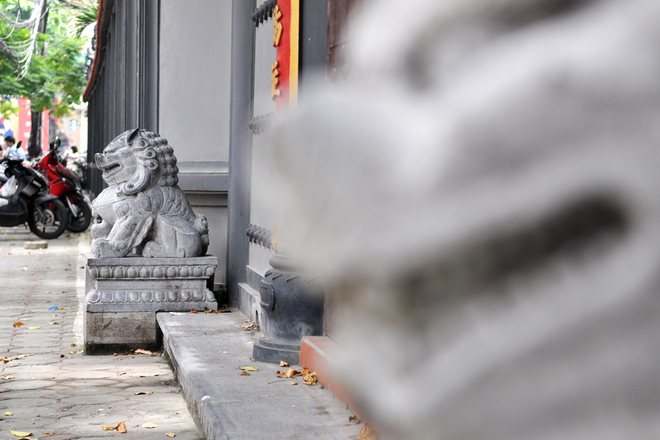 At Van Ho pagoda on Le Dai Hanh Street, Chinese-style ty huu statues stand in front of the small door on Ba Trieu Street.
At Van Ho pagoda on Le Dai Hanh Street, Chinese-style ty huu statues stand in front of the small door on Ba Trieu Street.